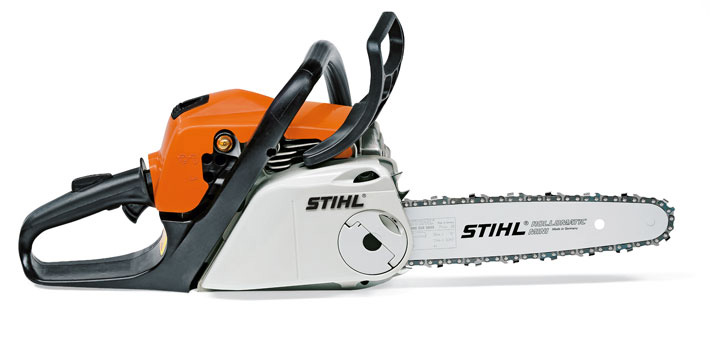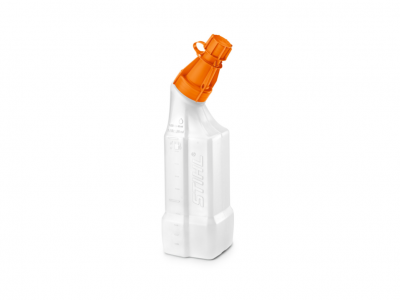Standard features
Pre-separation air filtration system
The innovative long-life air filter system greatly extends the service life of the filter. Air routing removes larger particles of dirt, meaning the actual filter has less to do. So the saw can be used for longer without having to clean the filter.
Advanced combustion technology
Four overflow channels swirl the fuel-air mix before ignition, allowing for optimum combustion and highly efficient performance. The result: lower consumption and high torque across a broad rpm range.
STIHL anti-vibration system
Intense vibration at the handles of power tools can lead to longer-term effects of blood vessels in the hands and arms. STIHL have therefore developed an effective anti-vibration system where by the oscillations from the machines engine are dampened which significantly reduces vibrations at the handles.
Compensator
This controller in the carburettor prevents the fuel-air mixture getting richer as the air filter becomes clogged. The correct quantity of fuel is delivered to the carburettor depending on the quantity of air passing through the air filter. This keeps the fuel/air ratio in the combustion mixture constant and hence also the engine power. The filter doesn’t need to be cleaned until an appreciable drop in power occurs.
Manual fuel pump (Purger)
A small fuel pump delivers fuel to the carburettor at the touch of a button. This reduces the number of starting strokes required from a cold start.
Single-lever master control
All important functions such as start, choke, throttle and stop are operated via a single lever.
STIHL Ematic-System
The Ematic chain lubrication system ensures pinpoint lubrication of the saw chain links and guide bar rails. When used with STIHL OILOMATIC saw chain, it will provide maximum lubrication, longer wear and less oil consumption than conventional methods of chain lubrication. The Ematic system can reduce bar oil consumption up to 50%.
Easy2Start
Easy starting with less effort due to an additional spring between the crankshaft and the rope rotor. A smooth pull on the starter rope tensions the spring against the compression resistance of the engine. The jerks are not transmitted to the rope. The spring automatically transmits the stored energy to the crankshaft, causing it to turn and ensuring reliable starting of the engine.




